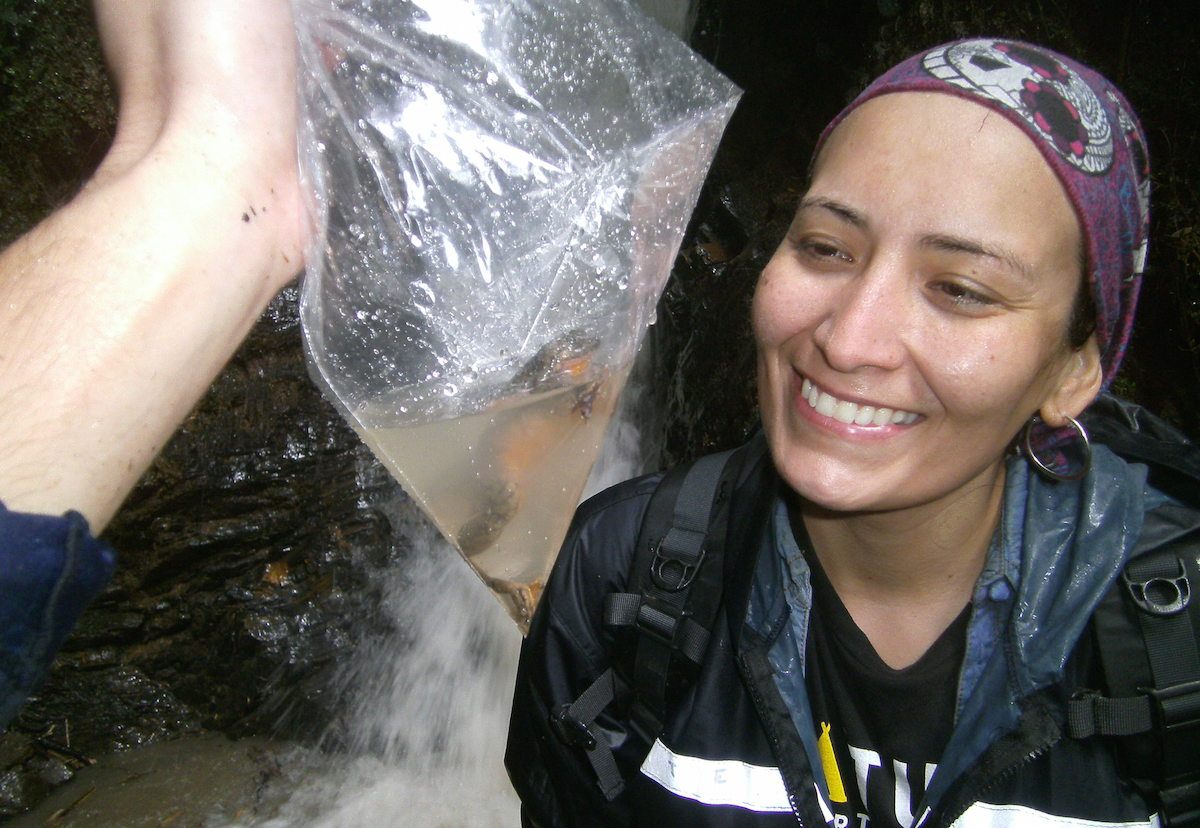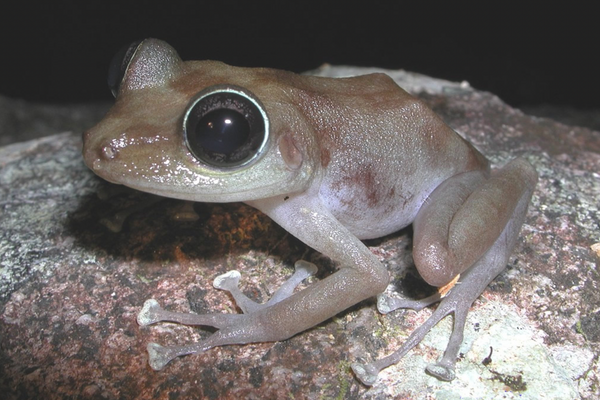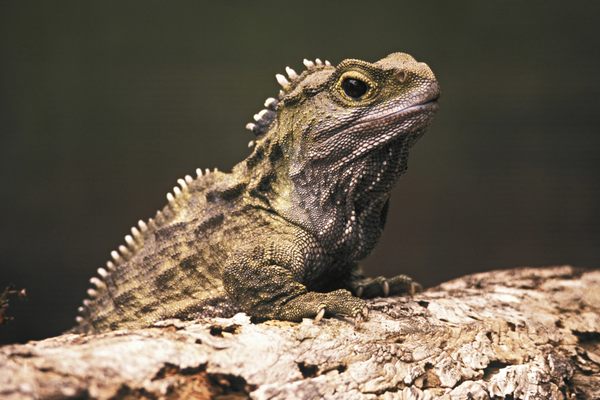The World’s Loneliest Frog Has a Potential Mate, And Now Comes the Hard Part
To save the species, Romeo and Juliet need to make tadpoles.

Researchers in Bolivia recently, and to much fanfare, found a potential mate for the world’s loneliest frog, whom they called Romeo, thought to have been the last of his species. While the search is over, they now need to make sure that the match leads to viable tadpoles to help save the Sehuencas water frog from extinction.
Romeo is a fully aquatic frog (Telmatobius yuracare) native to the cloud forests of Bolivia, and for the last decade or so he has shared an aquarium at the K’yara Center for the Research and Conservation of Threatened Amphibians in Cochabamba with two cousin species, but never one of his own kind. When the other frogs sang their mating calls, Romeo would call out, too, suggesting he would be ready to reproduce if a partner was ever found. There are also pads on his front feet, called nuptial pads, that have turned black, signaling reproductive readiness. Herpetologist Teresa Camacho Badani and her team are hopeful this means that Romeo will get down to the business of making more frogs—once he meets Juliet.
For now, Juliet is in another tank, under quarantine with four other recently discovered Sehuencas (two males and one more female) until it’s certain they are free of chytridiomycosis, chytrid for short, a deadly fungal disease that has been decimating frog populations worldwide. When the new frogs are clear, they will be moved, with Romeo, to a shipping container that has been retrofitted into a rescue habitat. There, scientists have replicated the temperature and water current fluctuations of the frogs’ native cloud forest. Camacho and her team believe that reproduction happens once a year for Sehuencas, at the end of a rainy season, some time in February or March. They hope to have the frogs together by then.

Romeo was discovered in 2008 by ecologist Oliver Quinteros Muñoz in Bolivia’s cloud forests, or yungas. Although on the decline, Sehuencas populations seemed okay at the time, though chytrid, the introduction of predatory trout, and habitat loss loomed. When Romeo was brought to the K’yara Center, no one imagined it would be so challenging to find him a potential mate. But ensuing expeditions failed to turn up more, and things began to look dire.
Sehuencas water frogs generally live about 15 years, so by 2018 Romeo’s biological clock—and the clock of his entire species—was ticking loudly. Global Wildlife Conservation teamed up with K’yara Center researchers to help fund ecological expeditions to search for Romeo’s Juliet (she had a name before she was even found) and to bring global attention to the species.
After intensively vetting areas where Sehuencas were most likely to be found, with permission from local communities, researchers spent days spent slogging through streams and turning over stones. On December 7, 2018, Camacho’s team finally found the first Sehuencas water frog that had been seen in the wild in ten years—a male. The following day, Camacho discovered Juliet by a waterfall.

The project has garnered a lot of attention because of the outreach the Global Wildlife Fund conducted with Camacho and her team at the K’yara Center. It started on Valentine’s Day 2018, when amphibian bachelor Romeo was first introduced to the world via a Match.com profile, and then a Twitter feed. Camacho says the profile and feed capture the frog’s character quite accurately—he is shy, lonely, and enjoys swimming.
Working with animals, “You realize that they all do have their individual personalities and you can create emotional bonds,” says Christopher Jordan, Global Wildlife Conservation’s Central America and tropical Andes coordinator, who has worked closely with Camacho and her team to create a future for the Sehuencas. “Scientists are trained not to communicate about those bonds, but we all feel them.”
Take Camacho. Though she has worked with Romeo for years, she still gets a warm feeling when she reads the Twitter feed: “It feels like he’s talking to me, he really loves me.”
Jordan and Camacho both acknowledge that the emotional bond is likely one-sided, and far less important than whatever biological bond they hope he’ll form with Juliet. Ultimately, after careful breeding, the hope is that Romeo, his soon-to-be companions, and their descendants will be reintroduced to the wild, so researchers don’t want them to get too comfortable with human companionship, and that means keeping them isolated.
Although Romeo and Juliet have become overnight internet celebrities, the paparazzi has been limited to two photographers: Robin Moore of Global Wildlife Conservation, and more recently National Geographic photographer Joel Sartore, who shot both frogs for Photo Ark, an effort to document every captive species on Earth in danger of extinction.
“When Joel took out Juliet, most people in the museum had never even seen her,” says Camacho.
Now the focus is on making conditions as comfortable as possible for the pair’s first date. Eggs were developing visibly in the female frogs that were just captured in the field, but hope must be tempered with caution.
“Just because they have eggs doesn’t mean they’ll necessarily reproduce. Sometimes if the conditions aren’t right the females might reabsorb the eggs,” Camacho says, and it would be back to the drawing board for another year.



















Follow us on Twitter to get the latest on the world's hidden wonders.
Like us on Facebook to get the latest on the world's hidden wonders.
Follow us on Twitter Like us on Facebook